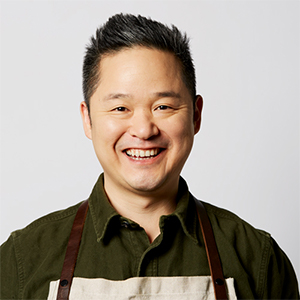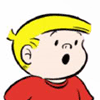Keep Your Eye on 'Graveyard Shift' and 'Gimlet'
We call an overnight flight from coast to coast "the red eye" because its passengers disembark with bleary, irritated eyes from lack of sleep. Such ocular fatigue also provides the origin of the term "graveyard shift."
According to Webb Garrison's book "Why You Say It," "graveyard shift," meaning the midnight to 8 a.m. shift in a factory or other workplace, was originally "gravy-eyed" -- a term for eyes so weary and watery they appeared to be full of gravy.
Garrison says sailors used "gravy-eyed" to describe shipmates coming off the overnight watch, and soon seamen started calling this nighttime tour of duty the "gravy-eyed shift."
Landlubbers apparently mistook this nautical expression for "graveyard shift," which seemed the perfect term for dead-of-night duty.
Speaking of eyesores, here's one spotted by Larry Yother of Bloomfield, Connecticut: "The scam requires the addition of Lily ... a slow-eyed pickpocket." (I've heard of lazy eye, but "slow eye"?)
The term intended is presumably "sloe-eyed." A "sloe" is the small blackish or purplish fruit of the blackthorn, a European shrub. And, yes, it's this sour berry that flavors the sweet reddish liqueur called "sloe gin."
"Sloe-eyed" evolved during the 1860s to refer to someone, usually an attractive woman, whose soft, dark eyes resemble the color of sloe.
What about "gimlet-eyed"?
A gimlet is a small tool with a screw point, grooved shank and cross handle for boring holes. Because a gimlet is sharp, people with penetrating eyes are often described as "gimlet-eyed."
The popular cocktail that combines sweetened lime juice with gin or vodka is also called a "gimlet," most likely because of its sharp, piercing effect. (And if a gimlet isn't piercing enough, some folks order a "screwdriver.")
There's also a theory that this drink was named for the Royal Navy surgeon Rear Adm. Sir Thomas Gimlette, because he recommended that British sailors drink lime juice to prevent scurvy, though evidence for this derivation is well, scarce-y.
And why is a canine tooth of the upper jaw called an "eyetooth"?
Some say it's because these food-tearing teeth, the third from the center on each side, are located directly under the eyes. Others say it's because children old enough to have acquired permanent canine teeth (at age 11 or 12) are wise enough to cast a gimlet eye on the ways of the world.
I'd give my eyeteeth to know the true origin of this term, and of the "gimlet" drink as well.
========
Rob Kyff, a teacher and writer in West Hartford, Connecticut, invites your language sightings. His book, "Mark My Words," is available for $9.99 on Amazon.com. Send your reports of misuse and abuse, as well as examples of good writing, via email to WordGuy@aol.com or by regular mail to Rob Kyff, Creators Syndicate, 737 3rd Street, Hermosa Beach, CA 90254. COPYRIGHT 2025 CREATORS.COM
Copyright 2025 Creators Syndicate Inc.








Comments